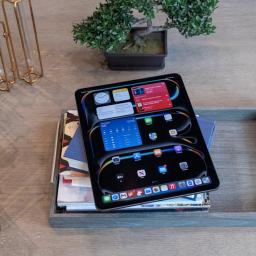 |
by Lawrence Bonk on (#70E0Z)
Apple may be releasing a new iPad Pro with an M5 chip in the very near future, according to an unboxing video made by a Russian YouTuber. This is the same creator that leaked the 14-inch MacBook Pro with the M4 chip last year, so the information in the video is likely credible.To that end, the creator unboxes what appears to be a new 13-inch iPad Pro with an M5 chip and 256GB of storage in a Space Black finish. The exterior design doesn't look noticeably different from current models, as the tablet still has a single rear camera, four speakers and a Smart Connector.Previous leaks had indicated that the next iPad Pro would feature a second front camera, but this video doesn't confirm that. It also looks like this new model is still plenty thin.The video even puts the tablet through some testing. A Geekbench 6 benchmark shows a 12 percent increase in multi-core CPU performance when compared to the previous generation. This benchmark result suggests a 36 percent faster GPU. It also indicated that the 256GB model of this tablet will include 12GB of RAM. Current models with 256GB of storage ship with just 8GB of RAM.The footage shows that this tablet is running iPadOS 26, which makes sense, and that the battery was manufactured in August of this year. This could all be a ruse but, again, the leaker has been proven correct in the past. It's likely that Apple will announce the refreshed iPad Pro with the M5 chip sometime in October, which tracks with previous reporting.It was also recently reported that the company is working on a refresh of the MacBook Pro laptop with the M5 chip. These computers could be available later this year.This article originally appeared on Engadget at https://www.engadget.com/mobile/tablets/it-looks-like-an-m5-ipad-pro-is-coming-very-soon-184406117.html?src=rss
|
 Engadget is a web magazine with obsessive daily coverage of everything new in gadgets and consumer electronics
Engadget is a web magazine with obsessive daily coverage of everything new in gadgets and consumer electronics
| Link | https://www.engadget.com/ |
| Feed | https://www.engadget.com/rss.xml |
| Copyright | copyright Yahoo 2026 |
| Updated | 2026-01-07 22:02 |
 |
on (#70DQQ)
It's not technically Techtober yet since we're one day shy, but we've already had a bunch of fall hardware events from some of the bigger companies in the tech space. Today, it was Amazon's turn to step up to the plate.Going into its event, the company teased new Echo speakers and Kindle news. Rumors suggested Amazon was ready to ditch its long-standing Android-based OS on Fire TVs in favor of the Linux-based Vega OS it's already using on the Echo Show 5, Echo Hub units and Echo Spot.Indeed, Echo, Kindle and Fire TV are all being featured at the event, along with Ring and Blink devices. Oh, and lots of Alexa+ updates, of course.Amazon doesn't usually livestream its product events and that remained the case here. However, we've got you covered with all the news and announcements with both our liveblog and this here rundown of everything Amazon announced at its fall hardware event:Echo speakersEcho speakersAmazonThe Echo lineup was beyond overdue for a refresh - it's been five years since the 4th-gen Echo arrived, while the most recent Echo Studio debuted a couple of years later. And, with Amazon looking to push Alexa+, it's certainly time for some new models.To that end, the $100 Echo Dot Max and $220 Echo Studio are up for pre-order and will ship on October 29. No sign of a new standard Echo this time!The Echo Dot Max delivers almost three times the bass of the fifth-gen Echo Dot and sound that adapts to your space, Amazon claims. The company added that the updated design integrates the speaker directly into the device's housing, freeing up extra space for more bass. In fact, the Echo Dot Max has two speakers: a high-excursion woofer optimized for deep bass and a custom tweeter for crisp high notes."Amazon has shrunk down the Echo Studio to 60 percent of the size of the last version. Even so, it has a powerful high-excursion woofer that delivers deep, immersive bass and three optimally placed full-range drivers to create immersive," room-filling sound, according to the company. The latest model supports spatial audio and Dolby Atmos.If you're in the US and you snap up either of the new Echo speakers - or the latest Echo Show devices - Amazon says you'll get early access to Alexa+. We've had a chance to try the speakers, so be sure to check out Engadget senior reporter Jeff Dunn's first impressions.Alexa Home Theater with Echo
|
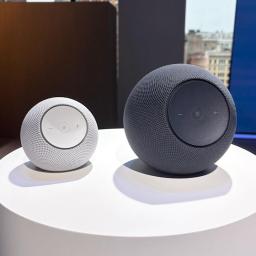 |
by Jeff Dunn on (#70E10)
Among the horde of new devices Amazon unveiled during its New York City event on Tuesday are two new Echo speakers: a higher-end Echo Dot called the Echo Dot Max and a next-generation Echo Studio with a new ball-shaped design. Both are available to pre-order starting today, with shipping to start on October 29. The Dot Max costs $100 - well above the standard Dot (which remains available) - while the Studio is priced at $220. The Echo Dot Max looks to be Amazon's answer to Apple's HomePod mini, which is similarly compact yet touts quality sound for its size. The company says the new speaker offers nearly three times" as much bass response as the cheaper Echo Dot. That's largely because it's been redesigned on the inside to include two speakers - a woofer and a custom tweeter - instead of one and to increase the amount of internal air space. The new Echo Studio, meanwhile, gets a fairly major design overhaul. It essentially looks like a bigger version of Echo Dot Max, with the old cylindrical design replaced by a spherical shape. Amazon says it's 40 percent smaller than the last one, with the goal being to make it easier to stick the device in varying locations around the house. This one is built with three full-range drivers alongside a woofer, and it supports both Dolby Atmos and spatial audio with services that offer that (such as Apple Music). The Amazon Echo Dot Max. Sam Rutherford for Engadget The Studio's smaller footprint could be handy if you want to take advantage of the new Alexa Home Theater mode. This lets you turn up to five new Echo Studios or Echo Dot Maxes into a surround sound setup for your TV, sort of like an Alexa-fied version of the room calibration tech Sonos offers with its home speakers. If you have compatible gear, Amazon says the voice assistant will automatically locate the different speakers in your room and map out an appropriate acoustic profile. An Amazon representative told us that you need a Fire TV Stick 4K or 4K Max streamer for this to work for now, however, since Alexa uses your TV's location to determine where the front of the surround system is, then uses that in tandem with your speakers' locations to estimate where you're sitting. This whole process takes less than five minutes," according to the company, and it'll auto-adjust if you add in more speakers. You won't be able to mix and match Studios and Dot Maxes in one setup at launch, however - it has to be all of one speaker or the other. I was briefly able to check out and listen to the new speakers at the event through a controlled demo. I wouldn't say either looks particularly premium" at first blush, but the spherical designs are clean and simple, and the knitted fabric surrounding the hardware feels firm and sturdy. Neither strays too far from the traditional Echo aesthetic; you could pop them on a counter or TV stand and they won't draw much attention to themselves. Of note, the volume/mic control buttons and Alexa light ring are now angled on the front of each device, which may make quickly adjusting things a little bit quicker. As for how the two speakers actually sound, I have to reiterate that my demo was highly controlled, i.e. orchestrated to make the new speakers sound as good as possible. I wasn't able to pick a song, adjust volume or actually talk to Alexa myself. (Though Amazon says there are new chips and mic arrays to improve conversation detection.) The Amazon Echo Studio. Sam Rutherford for Engadget With that said, the Echo Dot Max did indeed produce more bass thump and clearer separation than the cheaper Dot in a side-by-side comparison using Fleetwood Mac's Dreams." It better, given the price, but it sounded far less closed-off" all the same. The Echo Studio was a marked step up from there, producing a much wider soundstage, more impactful bass and more natural highs. Again, take all of this with a grain of salt, but I wouldn't be surprised if we said it's worth the premium for audio-focused buyers when we test it ourselves. An Amazon rep said this new Studio model isn't noticeably louder than the last one, though, which isn't surprising given how much more compact it is. Instead, the focus is on the smaller frame and a richer" sound. To that end, both devices seemed to go for a slightly more bass-heavy profile than a neutral one, based on my limited listen. I was also able to listen to four Echo Studios paired in tandem. Predictably, this setup filled the room with sound and delivered more precise imaging, whether we were listening to an ambient soundscape of birds chirping in the woods or an action-heavy scene from Ready Player One. I do question the value, though: You're getting close to the $1,000 range with four of these things, and at that point, many people may be better off just getting a decent soundbar and a dedicated subwoofer for fuller bass. Naturally, Amazon says both speakers - along with the new Echo Show 8 and Echo Show 11 - are designed with Alexa+ in mind, and anyone who buys either device will be able to use the upgraded assistant in early access. Both are still likely to be more niche than the less expensive Echoes, given that many people still use these things for simpler smart home tasks and basic listening. But for those who've grown accustomed having an Echo around the house and are willing to pay for improved sound quality, there may be enough to like here. We'll know more clearly when we're able to test them on our own. This article originally appeared on Engadget at https://www.engadget.com/audio/speakers/amazon-echo-studio-and-echo-dot-max-hands-on-more-bass-round-shapes-182339624.html?src=rss
|
 |
by Andre Revilla on (#70E11)
Imgur has shut off its image-hosting platform for users in the UK, displaying a content not available in your region" notice across the site and on third-party embeds. The move comes after the UK Information Commissioner's Office (ICO) warned that it intended to levy fines against Imgur's owner, MediaLab AI, after an investigation into the service's handling of children's data, age verification and privacy protection. Exact details of the fine, or what the findings of the investigation were, have not been shared."We are aware of reports that the social media platform Imgur is currently not available in the UK. Imgur's decision to restrict access in the UK is a commercial decision taken by the company," said regulators in a statement. They also stressed that "exiting the UK" does not mean a company can avoid any levied penalties, and that the investigation is ongoing."Our findings are provisional and the ICO will carefully consider any representations from MediaLab before taking a final decision whether to issue a monetary penalty," said regulators.In recent years, the ICO has stepped up enforcement of its policies governing data privacy for minors. In 2023, the watchdog fined TikTok $15.8 million for what it said were several violations of data protection laws. The regulator alleged that in 2020 TikTok allowed as many as 1.4 million children under the age of 13 to use the app, against its own policies. TikTok found itself under investigation yet again this year over similar alleged violations. The ICO also previously raised concerns surrounding a Snapchat generative AI chatbot named My AI, alleging that it placed children's privacy at risk.This article originally appeared on Engadget at https://www.engadget.com/big-tech/imgur-has-left-the-uk-181715724.html?src=rss
|
 |
by Anna Washenko on (#70DYB)
Avalanche Studios is following in the footsteps of so many game developers this year. Today, the company posted a notice to its website announcing plans for a restructuring. Avalanche said it will close its studio in Liverpool, impacting all staff members in the city. The company said it will also "reduce our workforce and restructure the teams" at its studios in Malmo and Stockholm, but did not provide specifics about the scope of those layoffs.Although the statement simply credited the decision to "current challenges to our business and the industry," it's hard not to think that the cancellation of Avalanche's planned game Contraband had something to do with the current need to consolidate. Microsoft ended active development on the project in August during the fallout from the massive layoffs the tech giant announced over the spring and summer. Those cuts appeared to impact the fate of many other upcoming games and game studios that were working with Microsoft as either a developer or a publisher.Since we won't get to know them for Contraband, Avalanche Studios will remain best known for its Just Cause games of open-world mayhem for now. Contraband is the only game currently listed as a forthcoming title on the company website, so it's unclear what the next moves for the remaining team members will be. The notice closes by saying, "Despite these changes, we remain deeply committed to providing amazing games to our passionate player communities." Hopefully they'll be able to bounce back.This article originally appeared on Engadget at https://www.engadget.com/gaming/just-cause-developer-avalanche-studios-is-the-latest-game-company-to-announce-layoffs-180048615.html?src=rss
|
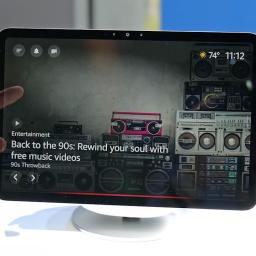 |
by Sam Rutherford on (#70DYC)
It's been a couple years since the Echo 8 has gotten an update and even longer for the aging Echo Show 10. But today Amazon is fixing that with two brand-new smart displays: The fourth-gen Echo Show 8 and Echo Show 11. Right away, the first thing you notice about Amazon's refreshed lineup is their designs. In front, there's a slim tablet-based HD display (either 8.7 inches or 11 inches depending on the model). Around back there's a curvier housing covered in a mesh fabric for the display's internals and speakers that borrows a lot from the new Echo Studio and Echo Dot Max. This is a pretty big departure from Amazon's wedge-shaped predecessors and I think it's a success. Both models look more elegant and refined, while their rounded bases make it easier to angle them properly in whatever room they're in. Sam Rutherford for Engadget That said, while both models feature new 13MP cameras with auto-framing tech (meaning they can track your face if you need to move around the room while on a video call), neither version has a built-in motor that would allow the entire display to rotate and spin like you got on the old Echo Show 10. I suspect this is a tacit admission by Amazon that a movable display is a bit of a gimmick, at least on a smart display. Or it's just not super necessary when you can just have the device's camera re-compose your video framing dynamically in software. Elsewhere, there are a few handy physical controls for volume located on the right side of the Echo Shows' displays along with a toggle for disabling the onboard mics and camera. Aside from that, there's a single barrel plug in back for power (which is slightly annoying, I wish it was USB-C) and not much else. So if for some reason you want to connect the new Echo Shows to wired internet, you're going to need to get pretty creative. Unfortunately, I didn't get a chance to see how the audio on the new Echo Show models compares to the refreshed Echo Studio or Dot Max. However, Amazon's updated displays are a big improvement. They have huge viewing angles so it's never hard to see what's on the screen from wherever your standing. And while Amazon hasn't provided official brightness figures, based on what I've seen, the panels are rather vibrant, so there shouldn't be any major issues viewing things in sunny rooms. Amazon's refreshed UI is also rather straightforward. All you need is a couple taps or swipes to open things like the video tab, music controls, settings and a list of upcoming calendar events. Meanwhile, the addition of Amazon's AZ3 Pro chip has greatly improved the responsiveness of touch and gesture input to the point where it felt a bit faster than the Google Nest Hub Max I have at home. Sam Rutherford for Engadget Of course, the real impact of the new Echo Shows is yet to be seen, because while updated hardware is nice, the real value of these smart displays is how they are now better positioned to be the center of Amazon's smart home ecosystem. Both devices support Zigbee, Matter and Thread so it should be easy to use them to control other devices, while features like a Wi-Fi radar enables a wider range of contextual interactions from Alexa. And while I think the ability to create routines and automations strictly using your voice is a major upgrade for the average user, I wasn't able to test that functionality out myself at the event. The other potential omission is that while Amazon's two largest smart displays got much needed refreshes today, the same can't be said for the Echo Show 5. So while that model continues to be on sale, I wouldn't be surprised if it got discontinued when supply runs out or re-imagined as something closer to a smart alarm clock sometime in the future, as it's smaller screen makes it's role as a smart home hub a bit more limited. The new Echo Show ($180) and Echo Show 11 ($220) are available for pre-order today and will come with early access to Alexa+ before official sales begin on November 12. This article originally appeared on Engadget at https://www.engadget.com/home/smart-home/amazon-echo-show-8-and-show-11-hands-on-a-cuter-more-unified-smart-display-173918264.html?src=rss
|
 |
by Igor Bonifacic on (#70DYD)
Well, that was fast. One day after Wired reported that OpenAI was preparing to release a new AI social video app, the company has revealed it to the wider world. It's called the Sora app, and it's powered by OpenAI's new Sora 2 video model, allowing it to generate AI-made clips of nearly anything. As expected, the app's signature "cameo" feature allows people to add your likeness to videos they generate.Cameos are likely to be controversial, even if OpenAI is giving users a lot of control over whether someone can replicate their likeness in clips Sora generates. When you first start using the app, you can allow your friends (and even strangers) permission to generate images of you. Whenever someone uses your likeness in a video Sora will designate you as the "co-owner" of that clip, allowing you to later delete it or prevent others from further modifying the video with subsequent generations. The latter plays into Sora's "Remix" feature, which allows users to jump on trending videos to offer their own take on them. Sora 2 can generate sound alongside video, a first for OpenAI's model.Separately of the above restrictions, Sora can't generate videos of public figures - unless they upload their likeness to the app and grant their friends or everyone permission to use it in their creations - and the software will refuse to make pornographic content.Right now, Sora is only available on iOS, with no word yet on when it might arrive on Android, and you'll need an invite from the company. However, those lucky few who can join are able to invite four friends to download the software, much like the early days of say, Bluesky or Clubhouse (lol). OpenAI is only making Sora available to people in the US and Canada (sorry, everyone else).This article originally appeared on Engadget at https://www.engadget.com/ai/openais-sora-app-is-real-but-youll-need-an-invite-to-try-it-171849671.html?src=rss
|
 |
by Lawrence Bonk on (#70DYE)
The survival climbing game Cairn has been delayed until the first quarter of 2026. Development studio The Game Bakers had previously announced a release date for November 5 of this year.The delay is so the team can spend more time on "optimization, debug and polish." Creative director Emeric Thoa said that "after 5 years of work, it makes no sense to rush it" as "we want to be proud of the game we launch." Delays are never fun, but they are a whole lot better than buying a broken game at launch.We don't have an actual release date yet, but the game's still coming to both PC and PS5. There is a demo available, which has racked up 600,000 players on both platforms. The Game Bakers are beefing up that demo on October 13, adding ghost recordings of speedrunners and staffers. The company says these ghosts can be followed to "check new techniques or discover new routes and hidden areas." Mario Kart and other racing games have been doing something similar for years.For the uninitiated, Cairn is a tough-as-nails rock-climbing game with a free solo mode for added difficulty. There's no UI feedback, so players have to pay attention to the avatar's breathing and body language. It feels like a more intense cousin of the peaceful Jusant, which is another rock-climbing sim.This article originally appeared on Engadget at https://www.engadget.com/gaming/survival-climbing-game-cairn-has-been-delayed-until-2026-171512591.html?src=rss
|
 |
by Cherlynn Low on (#70DYF)
Amazon may have just unveiled a ton of new products across its Ring, Blink, Echo and Kindle categories, but it still had one more piece of hardware to show. Though it didn't get mentioned during the company's Devices and Services event earlier today, there is a new Smart Remote under the Amazon Basics brand that will be available for pre-order for $19.99 and will ship in October. According to the product listing page, it will be released on October 30. At first glance, the Smart Remote looks like a regular switch that you mount on your wall to control your lights or other appliances. Its full name on Amazon's current pre-order page even says it's a "Smart Dimmer Switch and Remote." It basically has four buttons that you can configure via the Alexa app or ask Alexa+ to map routines to. During a demo at the event space, an Amazon representative told an Echo Show "Alexa, when I press the top button I want you to activate the party time scene and play "Alive" by Pearl Jam. The assistant acknowledged the request and within 10 seconds said it had completed the task. The rep pressed a button and lights in the demo room came on, while the song started playing on the Echo Show. You can also use the Routines section of Amazon's app to customize what you want the device to do. In the same demo, the company also showed how the assistant can suggest routines based on your habits. It can also remind you to, say, take out the trash if you've connected a Ring camera and it's noticed patterns in which day of the week your garbage is removed from the street. The battery-powered remote can be mounted on a wall or surface and can be magnetically attached for maximum convenience. Though a simple remote might not be the most exciting thing, especially at an event where Amazon's voice assistant and AI were so widely talked about, it's still something people might find useful. Particularly if you want to just press a button to trigger a series of actions instead of finding the exact words to say in the precise pronunciation that is required to be understood by your smart speaker. This article originally appeared on Engadget at https://www.engadget.com/home/smart-home/amazon-has-a-new-smart-remote-thats-completely-programmable-by-alexa-170021739.html?src=rss
|
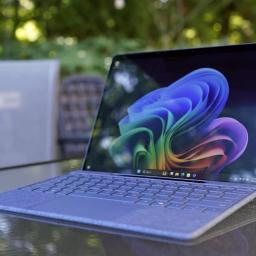 |
on (#70DYG)
What good is an update if it doesn't actually add anything new? That's the question I'm left asking about Microsoft's Windows 11 2025 update (AKA Windows 11 25H2), which the company will begin pushing out today. Instead of adding any major new capabilities, Microsoft says it's an enablement package" that includes recent features added to last year's 24H2 release. If anything, it could be a push for stragglers who've ignored recent updates to get onboard with new Windows 11 capabilities.Microsoft says the Windows 11 2025 update also includes significant advancements in build and runtime vulnerability detection, coupled with AI assisted secure coding." Additionally, the new update should be leaner than before, thanks to the removal of PowerShell 2.0 and Windows Management instrumentation command-line (WMIC). Those are legacy features most users have never touched, but their removal could annoy power users and IT admins who have built ancient scripts using PowerShell 2.0.As usual, Microsoft says it will start delivering the Windows 11 2025 update to users in waves. The first batch includes users with 24H2 devices who've turned on Get the latest updates as soon as they're available" in Windows Update. Now that Microsoft has moved to a frequent update cadence, you can expect to see actual new features for Windows 11 25H2 arriving in the coming months.This article originally appeared on Engadget at https://www.engadget.com/computing/microsofts-windows-11-2025-update-starts-rolling-out-today-but-dont-expect-anything-new-170005064.html?src=rss
|
 |
by Andre Revilla on (#70DV3)
Spotify founder and CEO Daniel Ek will be transitioning to the role of executive chairman on January 1 of next year. The current Co-President and Chief Product and Technology Officer Gustav Soderstrom and Co-President and Chief Business Officer Alex Norstrom will take his place as co-CEOs.Over the last few years, I've turned over a large part of the day-to-day management and strategic direction of Spotify to Alex and Gustav - who have shaped the company from our earliest days and are now more than ready to guide our next phase. This change simply matches titles to how we already operate. In my role as Executive Chairman, I will focus on the long arc of the company and keep the Board and our co-CEOs deeply connected through my engagement," Ek said in a statement.In a letter to Spotify employees, Ek also shared that he wants to help create more technology-driven "supercompanies" that "tackle some of the biggest challenges of our time."As a recent example of Ek's other interests, this summer he led a $700 million investment round into the defense tech firm Helsing. The company sells AI-powered software that analyzes weapons and sensor data in battlefields to help with military decision-making. Last year Helsing started manufacturing a line of military drones. Ek has received pushback on this investment in the form of a number of smaller artists, as well as Massive Attack pulling their music catalogs from Spotify.Daniel Ek founded Spotify in 2006 alongside Martin Lorentzon and oversaw the company's growth to almost 700 million monthly active listeners. It's been a busy year for the music streaming giant, which finally started offering lossless streaming after a multi-year wait.The company also finds itself at a crossroads as more AI-generated music is making its way to the platform. The company recently made some policy changes to address AI, though this was only aimed at fraudulent and deceptive uses of the technology. Fully AI-generated songs and albums are still permitted.This article originally appeared on Engadget at https://www.engadget.com/entertainment/streaming/daniel-ek-is-stepping-down-as-spotify-ceo-161519791.html?src=rss
|
 |
by Amy Skorheim on (#70DV4)
During its invite-only and not live-streamed Devices and Services event today out of New York City, Amazon announced its upcoming Ring and Blink devices, new Fire TVs and streaming sticks, Kindle Scribes and, finally, a whole new Echo device lineup - including new Echo Show smart displays. The latest smart-home screens were built to showcase Alexa+, the new and AI-improved smart assistant. There's a new Echo Show 8 and Echo Show 11 (as well as new Echo speakers). Amazon called them the most powerful Echo devices ever created. They have custom silicon, the AZ3 Pro with an AI Accelerator, as well as more advanced sensors and improved microphones for better noise cancellation. The look has been completely redesigned, and resembles a cross between the existing Echo Show 8 and the Echo Show 10, with a prominent speaker module at the bottom and floating screen up top. The speakers pack full-range drivers that fire audio forwards for clearer sound. Both of the new displays have negative liquid crystal screens designed to maximize viewing angles, so you can see them better from anywhere in a room. They each have 13MP cameras as well, which is the best camera ever included on an Echo Show. That and other sensors, including Wi-Fi radar, will enable contextualized Alexa+ interactions, like recognizing when you walk up to the display, triggering the AI to greet you, display your relevant information and even deliver one of your personalized reminders. Software upgrades include a new media control center to allow better access to your video and music and streaming apps. A new home hub has support for Zigbee, Matter and Thread, which should let you hook up even more smart home devices for Alexa to tap into. If you use your display for family scheduling, you can try the new color-coded calendars. If you wear an Oura ring, look for new wellness integrations centered around that fitness tracker. A new Alexa+ shopping widget will give you more control over your Amazon and Whole Foods deliveries while also suggesting items to buy and even gifts to give someone. Amazon/ Sam R for Engadget The Echo Show 8 and Show 11 were redesigned with Alexa+ in mind, the service that Amazon revealed at an event earlier this year. The AI-enhanced upgrade to Amazon's virtual assistant is supposed to be more conversational, retaining memories of your chats for more contextualized responses. Our experience with an early version of the assistant was... complicated. It was better at many things like multi-step tasks and using information from previous interactions, but it, like all AI-experiences, highlighted the limitations of computers trying to be people. Alexa+ is currently free with Prime, or costs $20 per month for non-Prime members. Prior to the announcement of the new display, the Echo Show lineup consisted of four models: The Echo Show 5, 8, 15 and 21 (the Echo Show 10 hasn't been consistently available these past few months). Each model number refers to the size of the screen (measured on the diagonal) and the smallest, the Echo Show 5, is designed for office desks or small kitchens. The older Show 8 was more suited to acting as a smart home hub and, like the Echo Show 5, designed to sit on a table or countertop. Both were last updated in 2023. The Show 15 and 21 are wall-mountable and can act as calendars and family planners in addition to subbing in as small TVs when needed. The two larger Show displays were last updated in 2024. The new Echo Show devices are available for pre-order today and will come with Alexa+ Early Access. The Echo Show 8 sells for $180 and the and Echo Show 11 for $220. Both will ship on November 12. This article originally appeared on Engadget at https://www.engadget.com/home/smart-home/amazon-just-announced-a-totally-redesigned-echo-show-8-and-echo-show-11-145937172.html?src=rss
|
 |
on (#70DV5)
What if you could just use a ton of Echo speakers as a surround sound setup for your TV? That's basically what Amazon is trying to accomplish with its new Alexa Home Theater feature, which was announced during its 2025 device launch today. As the name implies, Alexa Home Theater works with up to five of its new Echo Studio or Echo Dot Max devices to create a surround sound environment with compatible Fire TV sticks." According to the company, Alexa will automatically set up the Home Theater feature once you've plugged in several Echo devices.Clearly, Amazon isn't aiming for the home theater enthusiast crowd here. A surround sound system without a subwoofer simply won't sound very exciting. But if you're going for a fairly minimalist setup, I could see how having a few Echo orbs around your living room could be more aesthetically pleasing than giant speakers. It's unclear if Alexa Home Theater will work with the original Echo Studio, but we're trying to confirm that with Amazon.While the company is pitching this feature as an inexpensive entry into surround sound, a full Alexa Home Theater setup will start at $500 for five Echo Dot Max speakers, and it'll get even pricier once you throw in the $220 Echo Studio. At that point, just get a decent soundbar, which will be able to virtualize surround sound and offer better low-end.
|
 |
by Igor Bonifacic on (#70DQS)
Before it began slowly trickling out Alexa+ to users at the start of February, Amazon promised a smarter, more conversational assistant. It turned out the reality was more complicated, and, more than anything, Alexa+ in its current state is a showcase of the limitations of generative AI. Of course, that's not stopping Amazon from iterating on the digital assistant. During its "Devices and Services" event on Tuesday, Amazon announced a host of Alexa+ updates, with many of them enabling new integrations alongside the company's brand new devices.One of those new features is Alexa+ Greetings, which will roll out to Ring's new 2K and 4K devices this December. With the help of Ring's image recognition technology, Alexa+ will be able to make decisions about how to handle different visitors to your home. If it sees one of your friends or family members, it will know to greet them. Conversely, the digital assistant will ask questions of strangers to determine the purpose of their visit. It can also manage deliveries by providing instructions to couriers about where to leave a package.AmazonAlexa+ is also built directly into Vega, Amazon's new smart TV operating system. The integration will translate into more personalized recommendations, and the ability for Alexa+ to show you content related to your questions. For example, you can use the assistant to find a specific scene in a movie. In the demo Amazon showed, Vice President of Fire TV Aidan Marcuss instructed Alexa to "find the scene where Hatteburg hits a home run," and the assistant pulled up the appropriate spot in the film Moneyball. This functionality will be available while watching live sports too, meaning you can ask the assistant for updates on your favorite teams and more.Over on the Kindle side of things, you'll be able to send notes and documents you have stored on your Kindle Colorsoft or Scribe 3 to Alexa+. This feature will allow you to have a conversation about the contents of those files with the digital assistant, with the integration slated to arrive sometime early next year.AmazonOf course, the place you're most likely to interact with Alexa+ is when using an Echo device. Amazon is billing the refreshed 2025 Echo line - made up of Echo Dot Max, Echo Studio, Echo Show 8 and Echo Show 11 - as "designed for Alexa+". To that end, the company has equipped all of the new devices with two new chips, the AZ3 and AZ3 Pro. The silicon is faster and offers better voice processing, with Amazon claiming Alexa+ is over 50 percent better at detecting when you go to wake it. At the same time, there are new third-party integrations, with some notable partners including Fandango, Uber and Lyft. All of these will be found in the new Alexa+ Store where you'll be able to see the assistant's growing list of capabilities. If you would rather use a speaker from a different brand, Amazon said Bose, Sonos and Samsung, among others, are working to bring Alexa+ to their devices. Automakers like BMW are doing the same with their cars.Elsewhere, a new Alexa+ shopping widget will allow you to keep track of your Amazon, Whole Foods and Amazon Fresh purchases, including any deliveries you have scheduled. Naturally, Alexa+ can search the entire Amazon catalog and answer questions about any products you might want to buy.All of the new Echo devices Amazon announced today will ship with early access to Alexa+ out of the box. You can pre-order all four today, with general availability of the Echo Dot Max and Echo Studio to follow on October 29, while the Echo Show 8 and Echo Show 11 are slated to arrive on November 12.This article originally appeared on Engadget at https://www.engadget.com/ai/alexa-at-amazons-2025-event-greetings-and-more-143211291.html?src=rss
|
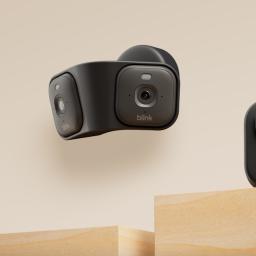 |
by Lawrence Bonk on (#70DQP)
Amazon just held a hardware event and introduced some new Blink security camera products. These include updates of the Blink Mini and Blink Outdoor. The Blink Mini 2K+ and the Blink Outdoor 2K+ are brand-new entries in the line-up that both capture 2K video, for added detail. The previous versions were locked at 1080p.The Blink Outdoor 2K+ features 4x zoom, enhanced low-light performance, two-way talk with noise cancellation and a whole lot more. It can detect both people and vehicles, automatically sending smartphone notifications to Blink Plus subscribers. The battery life is on-point and it includes the company's proprietary Weather Shield.Amazon is calling the Blink Mini 2K+ its "most advanced plug-in compact camera yet." It can handle 2K video and can also be used outdoors, if you purchase a weather-resistant power adapter.The company also announced something called the Blink Arc, which is another camera primarily intended for outdoor use. This one can capture a panoramic view of a yard with maximum coverage. The Arc is actually two cameras in one, with an AI-enhanced algorithm that fuses the footage together into a single 180-degree panorama.All of this stuff is available to pre-order right now. The Blink Mini 2K+ costs $50 and the Outdoor 2K+ costs $90. The Blink Arc costs a cool $100.This article originally appeared on Engadget at https://www.engadget.com/cameras/amazon-just-revealed-new-blink-security-cameras-including-the-outdoor-2k-144042562.html?src=rss
|
 |
by Sarah Fielding on (#70DQR)
Today Amazon held its annual Devices and Services event, debuting its next generation of products. While Amazon isn't live streaming the event, we're on the floor sharing everything it announces in our live blog, including a slew of new Ring products and features.Take Ring retinal vision, rolling out retinal vision across Retinol 2K and 4K doorbells and cameras. It uses back-side illumination sensors for clear vision even in low light. Ring pairs these sensors with custom large aperture lenses that it claims will capture more light and maintain sharpness throughout the frame.This is a developing story...This article originally appeared on Engadget at https://www.engadget.com/cameras/ring-announces-retinal-4k-vision-and-search-party-for-finding-pets-143314419.html?src=rss
|
 |
on (#70DQV)
If you're looking to a new set of Beats earbuds but aren't a fan of the company's over-the-ear hook, there's another fresh option to consider. The Apple-owned company revealed its latest model, the Powerbeats Fit, which looks a lot like the Beats Fit Pro that debuted in 2021. That's because this new set of earbuds is the direct successor to that four-year-old audio accessory.Don't expect a comprehensive overhaul though. In addition to the name change, Beats says it made the Powerbeats Fit more comfortable with a 20 percent more flexible wingtip. The whole package is also more compact thanks to a 17 percent smaller case. The price is staying the same as the previous model though, as the company kept that at $200.Beats says that the updated wingtip makes the Powerbeats Fit sit as securely in your ears as the Powerbeats Pro's hook design. The added flex means the earbuds are comfortable enough to be worn all day, according to the company, not just during workouts. The Powerbeats Fit still has an IPX4 rating for water resistance, so sweaty activities shouldn't be a problem. And to further improve fit, Beats added an extra small ear tip to the three previous sizes (small, medium and large).Beats' Powerbeats Fit have a familiar design.BeatsIn addition to slightly slimming down the charging case, Beats also added IPX4 moisture protection there. It's not the most robust coverage, but it's certainly better than nothing, and it's enough to withstand water splashes near the pool or in the locker room. There are also new colors for the Powerbeats Fit: orange and pink.Alongside these modest upgrades, the Powerbeats Fit retains much of what made the Beats Fit Pro a popular choice for ANC (active noise canceling) earbuds. Apple's H1 chip powers the features once again, including Personalized Spatial Audio with dynamic head tracking, Adaptive EQ, Audio Sharing, hands-free Siri and automatic switching between devices. You'll also get transparency mode, Find My and FaceTime with Dolby Atmos spatial audio.The Powerbeats Fit settings are baked into iOS, but Android users will use a dedicated app for customization like other recent Beats devices. Here, you can expect one-touch pairing, customizable controls, battery status, Locate My Beats and an ear tip fit test. All of that is available to iPhone users too, so neither group of OS loyalists will miss out.New colors for the Powerbeats Fit include pink and orange.BeatsOnboard controls offer quick access to playback changes, volume adjustments, listening modes, calls and voice assistants. These are still physical buttons, which can be an important consideration over the tappable, touch-based panels that some of the competition employs. Battery life is also consistent with the Beats Fit Pro: up to seven hours on the earbuds and up to 30 hours total with the charging case with ANC off. Turn noise cancellation on and you can expect six hours of use (24 hours with the case).The Powerbeats Fit is available for preorder today in black, gray, orange and pink color options for $200. The earbuds will hit retail shelves on October 2.This article originally appeared on Engadget at https://www.engadget.com/audio/headphones/beats-announces-the-powerbeats-fit-a-slightly-updated-successor-to-the-beats-fit-pro-140000905.html?src=rss
|
 |
by Sarah Fielding on (#70DM7)
Would you pay $20 for an AI-powered browser? Opera is betting on it with the release of its $19.90 (per month) "next generation AI browser," Opera Neon, meant for people who use AI every day. The Norwegian company first announced Neon in May and has now launched it to a limited number of users.According to Opera, "it's a browser built to not only let you browse the web, but to also use agentic AI to act for you and with you as you browse and work on complex projects. Opera Neon moves beyond a simple AI chat to execute tasks, create code, and deliver outcomes directly within the browser experience."Opera Neon includes features such as Tasks, which acts as your own workspaces to use AI for things like comparing and analyzing sources. There's also Cards, which is made up of reusable AI prompts, versus having to rewrite the same prompt over and over again. You can make your own prompts or pull them from the community's collection.Then there's Neon Do, which works with a Task to navigate the web for checking sources, looking at information, completing forms and more.Opera is hoping that this "premium, subscription-based browser" will entice users enough to pay $19.90 per month, rather than use free options such as Google's Gemini-powered Chrome features. You can join the waitlist to try it yourself, with Opera claiming more spots will become available soon.This article originally appeared on Engadget at https://www.engadget.com/ai/operas-ai-browser-will-cost-you-20-a-month-123022110.html?src=rss
|
 |
on (#70DM8)
Meta's Ray-Ban Display glasses are now on sale, but actually buying a pair will be a bit more complicated than ordering a pair of Meta's other smart glasses. That's because Meta isn't allowing online sales of its display glasses. Instead, they are only available by reservation at a handful of physical retail stores. For now, the $799 Meta Ray-Ban Display glasses are available at select Ray-Ban, Sunglass Hut, LensCrafters and Best Buy locations in the United States. Verizon will also start carrying the glasses sometime "soon," according to Meta. The company will also allow people to demo and buy a pair at its own Meta Lab locations. These include the Burlingame, California space that opened as the "Meta Store" in 2022, as well as pop-ups in Las Vegas, Los Angeles and New York opening in the coming weeks. In order to actually get your hands on a pair, though, you'll need to book an appointment for a demo at one of these stores through Meta's website. According to Meta, this is "to make sure customers get the glasses and band that's perfect for them." (In my own experience with both the Meta Ray-Ban Display glasses and the Orion prototype, the neural wristband requires a snug fit to function properly.) An appointment will also give shoppers the opportunity to order prescription lenses for the glasses. The glasses only support a prescription range of -4.00 to +4.00, though, so they won't be compatible with all prescriptions. The company recently said it's seen "strong" demand for demos and it looks like most locations are already booked out for several weeks, judging by Meta's scheduling website. It will also be difficult if you don't live near a major city. For example, Sunglass Hut's website currently lists just seven locations where demos will be available. The good news is that Meta does plan to eventually increase availability. The company has said the Meta Ray-Ban Display glasses will be available in Canada, France, Italy and the UK beginning in "early 2026" and that it expects buying options will "expand" the longer they're on sale. Sales of the glasses, which are Meta's first to incorporate a heads-up display, will be closely watched. At $799, the glasses are significantly more expensive than the rest of the frames in Meta's expanding lineup of "AI glasses." But, as I wrote after my recent demo at Meta Connect, the display also enables wearers to do much more than what's currently possible with the existing Ray-Ban or Oakley models. This article originally appeared on Engadget at https://www.engadget.com/how-to-buy-and-try-the-meta-ray-ban-display-glasses-121500138.html?src=rss
|
 |
by Steve Dent on (#70DMA)
Smartphone company Nothing now has quite the line of audio accessories and now counts a new adaptive ANC (active noise cancellation) over-the-ear headphone from its sub-brand CMF. The Headphone Pro offers remarkable specs for less than $100, with features like 40dB of noise cancellation, LDAC (Lossless Digital Audio Codec) and Hi-Res certification for both wired and wireless audio, along with an "Energy Slider" to adjust EQ. The CMF Headphone Pro doesn't at all resemble Nothing's boxy over-the-ear Headphone 1 cans. While that design was rather eccentric and austere, CMF's model has a softer, more conventional look with a rounded headband reminiscent of Sony's WH-1000XM5s. Another prominent feature is the large, interchangeable ear cups that appear to have generous padding. CMF's new cans come with adaptive ANC that reduces outside sounds by 40dB or up to 99 percent and automatically adjust the level according to outside noise. Though battery life is a generous 100 hours with ANC disabled, it gets cut in half to 50 hours with ANC turned on. That's still more than Sony's new WH-1000XM6, even without ANC enabled. You can get an additional four hours of service with just a five minute charge, and the Headphone Pro can be directly charged by some smartphones via a USB-C cable. Control-wise, the Headphone Pro is nicely analog, with buttons instead of the touch controls found on other headphones. Those include Bluetooth/power button on one side and an action button on the other that's customizable via Nothing's X app. There's a multifunction rocker for volume, playback and control of ANC/ambient sound. Then there's the Energy Slider that lets you make treble and bass adjustments without the need to dive into the X app's EQ settings. Nothing's CMF sub-brand will soon spin off into its own budget brand, the company announced recently. That doesn't seem to have happened yet, but you can now order the CMF Headphone Pro for just $84 in light grey, dark grey and light green, with shipping set for October 6. The company will soon offer interchangeable ear cushions as well in orange or light green for $25 a pair. This article originally appeared on Engadget at https://www.engadget.com/audio/headphones/nothing-spin-off-cmf-announces-100-headphone-pro-120002029.html?src=rss
|
 |
by Mat Smith on (#70DMB)
The fall tech events just won't stop. Today, Amazon has its fall hardware event, which is likely to reveal improvements to voice assistant Alexa and some new Echo homes for it to live inside. It's been a couple years since the Echo Show got an update, and it's been even longer for the standard Echo.The invitation suggests we're expecting some Kindle upgrades too - the image on the invitation is a Kindle with a color illustration. The Kindle Scribe 2 came out earlier this year as did the Kindle Colorsoft, so maybe there's something in the works that combines the best features of both.While Alexa and Kindle will be the main draws, Amazon's other tech brands, such as Ring and Eero, may also be present. In short, it's likely to be a busy event.It all kicks off at 10AM ET in New York City, where we'll be reporting live. Stay tuned for all the announcements on our Amazon devices liveblog. There's no video livestream, so we'll be updating from the event like it's 2010.- Mat SmithGet Engadget's newsletter delivered direct to your inbox. Subscribe right here!The news you might have missed
|
 |
by Mariella Moon on (#70DHX)
You'll now be able to buy some items you're looking for without leaving your ChatGPT conversation. OpenAI has launched a new feature called Instant Checkout, which is powered by Agentic Commerce Protocol, a technology it developed with Stripe. When you search for items to buy through ChatGPT, you'll be able to see which ones you can buy from within the chatbot among the products it shows you. The feature is available for both free and paid users, but it only supports single-item purchases from Etsy sellers in the US at the moment.OpenAI says over a million sellers that use Shopify, including Glossier, SKIMS and Spanx, will support the Instant Checkout "soon." It's also adding multi-item cart checkout and is expanding the feature's reach to more regions in the future. The company is open sourcing Agentic Commerce Protocol to allow more merchants to work on their ChatGPT integrations.In its post, OpenAI said that it will continue ranking the product results most relevant to your search query based on availability, price and quality. It will not give products that support Instant Checkout a boost and will not rank them higher than other options just because of the feature. Your orders and payments will still be handled by the merchant you're buying from, and you can either use your card on file with OpenAI or other available payment options. The company also said that it's the merchants who'll be paying a "small fee on completed purchases," and that Instant Checkout will not affect product prices for you.This article originally appeared on Engadget at https://www.engadget.com/ai/openai-will-let-you-buy-things-from-etsy-within-chatgpt-110032055.html?src=rss
|
 |
by Andre Revilla on (#70D8G)
Alphabet will pay President Donald Trump $22 million as part of a settlement in a class action lawsuit brought against the company over the suspension of various YouTube accounts following the January 6 riot at the US capital, as first reported by the Wall Street Journal. The suit includes other plaintiffs whose YouTube channels were banned that will split an additional $2.5 million in settlement payouts.Trump filed the suit in 2021, alongside lawsuits against Twitter and Facebook over similar suspensions, claiming they infringed on his first amendment rights. Twitter, now known as X since its acquisition and rebrand by Elon Musk, paid President Trump roughly $10 million to settle that suit. Meta also settled its suit with the president over his suspension from the platform for $25 million earlier this year.This settlement comes shortly after Alphabet wrote a letter to the House Judiciary Committee lambasting government pressure to moderate content on its platforms. The company also shared that YouTube would be offering a path to reinstatement for accounts previously banned for COVID-19 or election integrity related misinformation.The settlement from Alphabet will be paid to the Trust for the National Mall, a nonprofit partner of the National Park Service, and will be earmarked for construction of the ballroom that President Trump is building at The White House. The monies from the Meta settlement were similarly earmarked.This summer Paramount, parent company of CBS, settled a lawsuit brought by the president over claims that the network intended to "confuse, deceive and mislead the public" by editing an interview with Kamala Harris. The media company paid $16 million to settle the president's suit. Three weeks later the FCC approved the $8 billion acquisition of Paramount by Skydance.This article originally appeared on Engadget at https://www.engadget.com/big-tech/alphabet-will-pay-22-million-to-settle-president-trumps-youtube-lawsuit-234611643.html?src=rss
|
 |
on (#70D6S)
Sometimes when a device fails, it fails in spectacular fashion. Daniel Rotar, who leads the ZONEofTECH YouTube channel, posted on X today that the battery on his Samsung Galaxy Ring began swelling while he was wearing it. "I cannot take it off and this thing hurts," he wrote. A few hours later, Rotar posted again that he had gone to a hospital and received help to remove the smart ring. He also shared photos of the device that showed the swelling on the interior surface.
|
 |
on (#70D4J)
Tomorrow, Amazon will host an event in New York City to unveil some new hardware. The showcase kicks off on September 30 at 10AM ET. Based on what we can see in the invitation and the most common cadence of product news, we are expecting to hear about developments to the Echo line of smart speakers, at least one new addition to the Kindle collection and an update for the Fire TV.Normally this is where we'd have an embed of a YouTube link so you could watch along on Tuesday, but this event is a little unusual in that Amazon doesn't provide a stream for those of us at home. However, Engadget will have reporters at the event, and they will be liveblogging all the details as Amazon announces them. The liveblog will be up and running around 8AM ET.In past years, this fall showcase has also been when Amazon shares news from the Ring, Blink and Eero companies, so we might have more than just its own-brand products being discussed tomorrow. And with AI the buzzword of the day, there's also a good chance that Amazon execs will spend some time discussing the Alexa+ voice assistant.This article originally appeared on Engadget at https://www.engadget.com/how-to-follow-amazons-big-hardware-event-tomorrow-211105336.html?src=rss
|
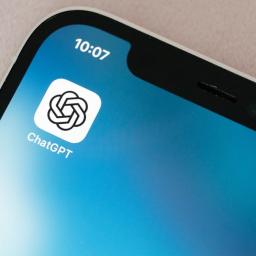 |
by Igor Bonifacic on (#70D4K)
In a development that should surprise no one, OpenAI is preparing to release a standalone social app powered by its upcoming Sora 2 video model, Wired reports. The app reportedly "closely resembles" TikTok, with a vertical video feed and swipe-to-scroll navigation. The catch? It will only feature AI-generated content; there's apparently no option for the user to upload photos or videos from their phone's camera roll.Wired adds OpenAI will limit Sora 2 to generating clips that are 10 seconds long or shorter for use inside of the app. It's unclear what the model's limit will be outside of the app. TikTok, following an original limit of 15 seconds, allows people to upload clips that are up to 10 minutes long. The new app is also said to include an identity verification tool. Should a user take advantage of the feature, Sora 2 will be able to use their likeness in videos it generates. In turn, that means other people will be able to tag those users and use their likeness when they go to remix one of their videos. As a safety precaution, OpenAI will push a notification to users whenever their likeness is used by someone else, even in situations where someone makes a video but never posts it to the app's feed.According to Wired, the software will refuse to generate some videos due to copyright restrictions. However, it's not clear just how robust these protections will be, with The Wall Street Journal reporting OpenAI will require rights holders to opt out of their content appearing in videos Sora 2 generates.As for why OpenAI would release a social media app, Wired suggests the company saw an opportunity after President Trump repeatedly extended the deadline for ByteDance to bring TikTok's US business under American control. By adding a social component to Sora, OpenAI may also be hoping to dissuade people from trying other models since leaving its new app would mean abandoning whatever community forms around it.This article originally appeared on Engadget at https://www.engadget.com/ai/openai-will-reportedly-release-a-tiktok-like-social-app-alongside-sora-2-205842527.html?src=rss
|
 |
on (#70D4M)
Reporter Marisa Kabas, founder of The Handbasket, posted on Bluesky today that more than 1.7 million subscribers canceled their paid Disney streaming plans between September 17 and September 23. The total allegedly includes subscriptions to Disney+, Hulu and ESPN. That falloff reportedly marked a 436 percent increase over the usual churn rate for the service. We've reached out to Disney+ for comment on this claim.Disney also chose to increase subscription prices last week, which could prolong the wave of cancellations. Kabas' source also claimed that Disney sped the return of the late night show because it had planned to announce the price hike last Tuesday.In case you need a reminder of the entertainment news that dominated headlines for the past two weeks, Disney-owned ABC suspended the late night talk show Jimmy Kimmel Live on September 17 after President Donald Trump and members of his administration accused the host of making inappropriate comments regarding the assassination of right-wing influencer Charlie Kirk. Although Disney then announced on September 22 that the program would be reinstated the following night, it seems a lot of viewers were not impressed with the company's actions.This article originally appeared on Engadget at https://www.engadget.com/entertainment/streaming/disney-reportedly-lost-17-million-paid-subscribers-in-the-week-after-suspending-kimmel-201615937.html?src=rss
|
 |
by Anna Washenko on (#7033D)
Apple isn't the only big tech company that's launching hardware this month. Amazon is having its fall hardware event on Tuesday, September 30 at 10AM ET in New York City, and - as it does most years - the company is expected to debut new devices across its myriad product categories. While the event will not be livestreamed, Engadget staff will be in attendance and liveblogging it in real-time. Our pre-show coverage will begin around 8AM ET.So what will Amazon be sharing? Using the images in the invitation that went out to members of the press as a jumping-off point, here are our best educated guesses as to what we can expect.AmazonIn February, Amazon introduced some improvements to its voice assistant, promising that Alexa+ would be more conversational and more helpful thanks to generative AI. It seems likely that the fall event will put hardware for interacting with Alexa+ front and center, so expect to hear about new models or new software updates for the Echo line of smart speakers. It's been a couple years since the Echo Show got an update, and it's been even longer for the standard Echo. Those two products are the most likely to star in the upcoming announcements.The invite also includes a photo of a Kindle that depicts a color illustration, so there may be more in store for the ereaders. The Kindle Scribe 2 just came out earlier this year, as did the Kindle Colorsoft, so maybe there's a new option in the works that combines the best features of both. As with the Echo, there also hasn't been much new for the basic model Kindle, so that may also be getting some updates.There's also what appears to be the corner of a television in the invitation, so news about the Fire TV also seems promising. This event is also where Amazon-owned Ring and Eero brands may unveil new products. Any announced items may not be available right away, but the timing does set the stage for some substantial discounts on older generations of Amazon gear. In fact, many of Amazon's current devices are already on sale - including Blink, Kindle and Ring - as more early October Prime Day deals pop up ahead of the sale's official start on October 7.Update, September 29, 2025, 3:20PM ET: This story has been updated to note Engadget's liveblog plans for the Amazon event.This article originally appeared on Engadget at https://www.engadget.com/big-tech/what-to-expect-from-amazons-event-on-tuesday-september-30-210035284.html?src=rss
|
 |
by Andre Revilla on (#70D1N)
Meta is expanding its use of facial recognition in Europe, the UK and South Korea to crack down on accounts that impersonate public figures. The new facial recognition-powered safety features are now live on Facebook in the regions and will expand to Instagram in the coming months.The technology was initially put to use last year starting in the US, helping to identify ads that fraudulently use a celebrity's likeness as well as to help people regain access to hacked accounts. Public figures opt in to this program in Europe, which is also being rolled out in South Korea alongside the new protections against impersonation. This new use case is aimed at scammers who pose as public figures to trick unsuspecting users into sending money or other scams of that nature."We'll now use facial recognition technology to compare the profile picture on the suspicious account to the real public figure's Facebook and Instagram profile pictures. If there's a match, we will remove the impostor account," said a Meta spokesperson.In addition to the US rollout, the company's facial recognition technology has been used to aid account recovery in the UK, EU and South Korea since March. This came three years after Facebook decided to shut down its facial recognition system on Facebook, due in large part to public backlash against the technology.The social media giant touts the benefits of these tools, reporting that in the first half of 2025, user reports of "celebrity bait" ads dropped by 22 percent globally. Facial recognition remains a controversial technology, with differing public opinion on its use in law enforcement and the workplace.This article originally appeared on Engadget at https://www.engadget.com/big-tech/meta-is-bringing-new-facial-recognition-tools-to-the-uk-eu-and-south-korea-185303065.html?src=rss
|
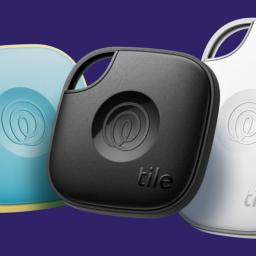 |
by Lawrence Bonk on (#70D1P)
Researchers have discovered major security flaws with Tile tracking tags, according to a report by Wired. These flaws could allow both the company itself and tech-savvy stalkers to track a user's location. The security issue could also let a malicious actor falsely frame a Tile owner for stalking, as the flaw can make it appear as if a particular tag is constantly in the vicinity of somebody else's tag.The issue pertains to how Tile tags transmit data during use. Tile tags transmit a lot of data beyond that of other trackers, including the static MAC address and the rotating ID. According to reporting, none of this stuff is encrypted. The rotating ID changes all of the time, but a MAC address doesn't.Researchers believe that all of this information is stored in cleartext, making it easy for hackers to get ahold of. This also would theoretically give Tile itself the ability to track its users, though the company says it doesn't have this capability.It gets worse. Anyone with a radio frequency scanner can allegedly intercept all of this information as it's being transmitted, creating another potential security hole. Also, this problem might not even be solved if Tile decides to stop transmitting the MAC address. This is because the company generates its rotating ID in such a way that future codes can be reliably predicted from past ones.An attacker only needs to record one message from the device," one of the researchers behind the findings said, adding that a single recorded message will "fingerprint it for the rest of its lifetime." The researcher said this creates a risk of systemic surveillance.The security researchers, who are involved with the Georgia Institute of Technology, reached out to Tile's parent company Life360 in November of last year to report the findings. Wired said the company stopped communicating with the researchers in February. The company did say it has made a number of improvements to its security but didn't elaborate further.This article originally appeared on Engadget at https://www.engadget.com/big-tech/tile-trackers-reportedly-have-a-security-flaw-that-can-let-stalkers-track-your-location-183949165.html?src=rss
|
 |
on (#70CZ7)
In May, Anthropic announced two new AI systems, Opus 4 and Sonnet 4. Now, less than six months later, the company is introducing Sonnet 4.5, and calling it the best coding model in the world to date. Anthropic's basis for that claim is a selection of benchmarks where the new AI outperforms not only its predecessor but also the more expensive Opus 4.1 and competing systems, including Google's Gemini 2.5 Pro and GPT-5 from OpenAI. For instance, in OSWorld, a suite that tests AI models on real-world computer tasks, Sonnet 4.5 set a record score of 61.4 percent, putting it 17 percentage points above Opus 4.1.At the same time, the new model is capable of autonomously working on multi-step projects for more than 30 hours, a significant improvement from the seven or so hours Opus 4 could maintain at launch. That's an important milestone for the type of agentic systems Anthropic wants to build.Sonnet 4.5 outperforms Anthropic's older models in coding and agentic tasks. AnthropicPerhaps more importantly, the company claims Sonnet 4.5 is its safest AI system to date, with the model having undergone "extensive" safety training. That training translates to a chatbot Anthropic says is "substantially" less prone to "sycophancy, deception, power-seeking and the tendency to encourage delusional thinking" - all potential model traits that have landed OpenAI in hot water in recent months. At the same time, Anthropic has strengthened Sonnet 4.5's protections against prompt injection attacks. Due to the sophistication of the new model, Anthropic is releasing Sonnet 4.5 under its AI Safety Level 3 framework, meaning it comes with filters designed to prevent potentially dangerous outputs related to prompts around chemical, biological and nuclear weapons.A chart showing how Sonnet 4.5 compares against other frontier models in safety testing. AnthropicWith today's announcement, Anthropic is also rolling out quality of life improvements across the Claude product stack. To start, Claude Code, the company's popular coding agent, has a refreshed terminal interface, with a new feature called checkpoints included. As you can probably guess from the name, they allow you to save your progress and roll back to a previous state if Claude writes some funky code that isn't quite working like you imagined it would. File creation, which Anthropic began rolling out at the start of the month, is now available to all Pro users, and if you joined the waitlist Claude for Chrome, you can start using the extension today.API pricing for Sonnet 4.5 remains at $3 per one million input tokens and $15 for the same amount of output tokens. The release of Sonnet 4.5 caps off a strong September for Anthropic. Just one day after Microsoft added Claude models to Copilot 365 last week, OpenAI admitted its rival offers the best AI for work-related tasks.This article originally appeared on Engadget at https://www.engadget.com/claude-sonnet-45-is-anthropics-safest-ai-model-yet-170000161.html?src=rss
|
 |
on (#70CZ9)
Sony has been marking the 30th anniversary of PlayStation by selling you stuff, like PS5 consoles and accessories styled after the PS1. The company has something else lined up to mark the occasion: a photography book showcasing "never-before-seen prototypes, concept sketches and design models that shaped hardware development" from the early days through to the current PS5 era.PlayStation: The First 30 Years is a 400-page hardback book printed on heavyweight matt art stock. You better hope your coffee table is sturdy, since this book is a chonkster. It weighs in at 5kg (11lbs).Sony worked with publisher Read-Only Memory on PlayStation: The First 30 Years. The collaborators have offered a peek at what's inside the book. It's shaping up to be a fascinating glimpse at some of the designs Sony tried for its hardware over the last few decades.For instance, the original PlayStation could have looked much different, more directly exemplifying designer Teiyu Goto's "vision of simple squares and circles coming to life." (For what it's worth, Engadget deputy editor Nathan Ingraham said this design looked like a proton pack):An early concept design for the original PlayStation.Sony/Read-Only MemorySome of the controller concepts are pretty out there too. Some don't look all that comfortable to hold or use for extended gaming sessions. This one - which appears to be for the PS3 at the earliest, given the inclusion of the PS button - is truly bonkers. Thank goodness Goto landed on the SNES-style design with grips that has proven so successful (and comfortable) over the years:A PlayStation controller concept.Sony/Read-Only MemoryThe book isn't entirely limited to hardware concepts, as it features photos of Sony's design labs. The tome seems like a very cool item for PlayStation fans and those who love gaming history to have, but there might be an element of sticker shock.The book is available via Read-Only Memory's website for $182. A deluxe edition with exposed binding, a foil-stamped clamshell presentation box and a photographic print signed by Goto and photographer Benedict Redgrove will run you $467. The fancier edition has a limited run of 1994 copies. Coincidentally, that's the year the PS1 debuted in Japan. Both editions of the book will ship in spring 2026.Meanwhile, Sony has teamed up with Reebok for a collection of 30th anniversary sneakers styled after - you guessed it - the PS1. The kicks will be available in October and the three designs are linked to the PS1's launch regions. They include the InstaPump Fury 94 for Japan, Pump Omni Zone II for the US and Workout Plus for the UK.Sony x Reebox sneakers are on the waySony/ReebokThis article originally appeared on Engadget at https://www.engadget.com/gaming/playstation/a-playstation-photography-book-featuring-never-before-seen-design-concepts-is-on-the-way-164859020.html?src=rss
|
 |
by Andre Revilla on (#70CZA)
Microsoft is taking inspiration from the AI-driven workflows of "vibe coding" and has now set out to make "vibe working" a thing (yes, those are the words the company chose.) Does AI in the workplace even lead to worthwhile outputs? Does it mortgage our brains' ability to learn? There are many seemingly critical question unanswered. But in the meantime, sure: vibe working it is.Using Office Agent within Office apps or Copilot chat, users can begin a document with a single prompt and then work iteratively alongside Copilot to develop a finished product. Microsoft says this is the "new pattern of work for human-agent collaboration." The Agent Mode tool supports Excel and Word workflows, and Microsoft says PowerPoint support is coming soon; Office Agent works with PowerPoint and Word, with Excel coming soon.The company waxes poetic about the "full power of Excel" being available only to expert users and promises that an Agent Mode that can "speak Excel" will change all that. In data shared as part of the announcement, Microsoft said that Copilot Agent Mode in Excel achieved 57.2 percent accuracy on the SpreadsheetBench benchmark. This is compared to a 71.3 percent human score, though it's not clear if that's for average users, Excel power users or how many human users that score is derived from. Still - not great numbers!Agent Mode also works in Word to summarize, edit and of course help to create entire drafts (though its unclear what those relative accuracy rates are.) Both the Excel and Word Agent Modes are powered by OpenAI's latest models. Office Agent in Copilot chat is powered by Anthropic models and can create PowerPoint presentations and Word documents in what Microsoft calls a "chat-first experience."Agent Mode for Excel and Word, as well as Office Agent, are available today through the Frontier program. Agent Mode is currently limited to the web-based versions of Word and Excel and is coming to desktop soon.This article originally appeared on Engadget at https://www.engadget.com/ai/microsoft-is-trying-to-make-vibe-working-a-thing-163334367.html?src=rss
|
 |
by Lawrence Bonk on (#70CW5)
The Federal Communications Commission (FCC) recently published a 163-page PDF showing the electrical schematics for the iPhone 16e, despite Apple specifically requesting them to be confidential. This was most likely a mistake on the part of the FCC, according to a report by AppleInsider.The agency also distributed a cover letter from Apple alongside the schematics, which is dated September 16, 2024. This letter verifies the company's request for privacy, indicating that the documents contain "confidential and proprietary trade secrets." The cover letter asks for the documents to be withheld from public view "indefinitely." Apple even suggested that a release of the files could give competitors an "unfair advantage."To that end, the documents feature full schematics of the iPhone 16e. These include block diagrams, electrical schematic diagrams, antenna locations and more. Competitors could simply buy a handset and open it up to get to this information, as the iPhone 16e came out back in February, but this leak would eliminate any guesswork. However, Apple is an extremely litigious company when it comes to stuff like patent infringement.The FCC hasn't addressed how this leak happened or what it intends to do about it. AppleInsider's reporting suggested that this probably happened due to an incorrect setting in a database. This was likely not an intentional act against Apple, which tracks given that the company has been especially supportive of the Trump administration. CEO Tim Cook even brought the president a gold trophy for being such a good and important boy.This article originally appeared on Engadget at https://www.engadget.com/big-tech/fcc-accidentally-leaked-iphone-schematics-potentially-giving-rivals-a-peek-at-company-secrets-154551807.html?src=rss
|
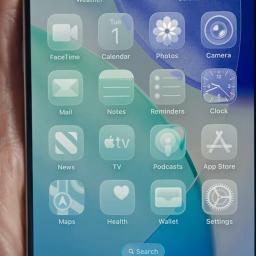 |
by Katie Teague on (#6Y5TM)
Have you played around with the new iOS 26 yet? Here's how to download it on your iPhone if you haven't yet - once you do, you'll notice several new changes, including a clear design called Liquid Glass. The translucent look can be found within apps as well as your lock and home screens. (You can't turn it off, but you can reduce the transparency to make it less clear.) The overhaul is one of several big changes that come with iOS, macOS, iPadOS, watchOS and the rest of Apple's software suite - the new operating system updates for those gadgets are also available to download now.You'll also see multiple useful additions in the Phone and Messages apps. For instance, the ability to weed out spam texts or unknown senders and an option to hold your spot on a phone call when you've been waiting for a representative to pick up. And for fun, you can now create polls in group texts. Other new improvements coming include a confirmed AirPods live translation feature, and a new bouncy animation on the passcode screen and in the Control Center.If you're planning to upgrade your phone this year, take a look at all the new models Apple unveiled during its iPhone 17 event, from the iPhone 17 lineup (check out our review of the iPhone 17) to the all-new ultra-thin iPhone Air (take a look at our hands-on review). If you missed the keynote, you can catch up on everything Apple announced here or rewatch the full iPhone 17 launch. The company rounded out its announcements with three new Apple Watch models, as well as the brand-new AirPods Pro 3.Most newer iPhone models are eligible to download iOS 26. We've rounded up a full list of new features you'll have to check out. If you're waiting to update your phone until iOS 26.1 becomes available, note that the beta version is available now so it shouldn't be too long before it's released to the public.What is iOS 26 and should I download iOS 18.7 first?Instead of releasing iOS 19, Apple skipped its naming convention ahead to iOS 26. The company has decided to line up its iOS version numbers with a year-based system, similar to car model years. So while iOS and its sibling operating systems were released in 2025, they're all designated "26" to reflect the year ahead.Apple also released iOS 18.7 alongside iOS 26 to address security issues - great news if you don't have a phone that's eligible to run the latest OS. If you're wondering which one to download first, it's really up to you. Do you want to wait for Apple to quash any bugs in iOS 26 or do you want access to all the new features everyone's talking about now?It's official, we're moving to iOS 26. (Apple)What is Liquid Glass design?Let's be honest. Out of everything announced at WWDC this year, the new Liquid Glass design was the star of the show. The iPhone's home and lock screens have looked pretty much the same year after year - the last exciting thing (in my opinion) was the option to add your own aesthetic to your home screen by customizing your apps and widgets. So seeing the home and lock screens' new facelift is refreshing.So what exactly is Liquid Glass? Apple calls it a "new translucent material" since, well, the apps and widgets are clear. However, the screen can still adapt to dark and light modes, depending on surroundings. You'll also notice buttons with a new floating design in several apps, like Phone and Maps. They're designed to be less distracting than the current buttons, but are still easy to see.While the design overhaul has proven to be controversial since its announcement, some - including Engadget's Devindra Hardawar - like the new direction, even if it's somewhat reminiscent of Microsoft's translucent Windows Vista Aero designs from nearly twenty years ago.That said, while it was in beta mode, Apple incorporated some user feedback into the design, dialing back the transparency in at least some places. And while it will continue to evolve, Apple users won't be able to escape it: The company says Liquid Glass was designed to make all of its platforms more cohesive.Here's a look at how the translucent aesthetic looks with the new macOS Tahoe 26 on your desktop.How to turn iOS 26 Liquid Glass settings offIf you find you don't like the new clear look after downloading iOS 26, you can change a couple Accessibility settings, though you can't completely turn off Liquid Glass. For starters, you can reduce the liquid look by going to Settings > Accessibility > Motion > toggle on Reduce Motion.You can make your drop-down menus more opaque instead of translucent by going to Settings >Accessibility > Display & Text Size > toggle on Reduce Transparency.You can also change your clear apps back to the way they were. Just press and hold any app on your screen and select Edit Home Screen. From here, tap Edit (top left) and Customize. You can swap out to Default, Dark or Tinted.What are the new and notable features of iOS 26?iOS 26 has a laundry list of new features. Among the most worthwhile:Phone app redesign: You can now scroll through contacts, recent calls and voicemail messages all on one screen. It also comes with a new feature called Hold Assist that'll notify you when an agent comes to the phone so you can avoid the elevator music and continue on with other tasks.Live Translation in Phone, FaceTime and Messages: iOS 26 brings the ability to have a conversation via phone call, FaceTime or text message with someone who speaks another language. Live Translation uses Apple Intelligence and it will translate your conversation in real time, which results in some stop-and-go interactions in the examples Apple shared during its presentation.Polls in group chats: Tired of sorting through what seems like hundreds of messages in your group chat? You and your friends can now create polls in group messages to decide things like which brunch spot you're eating at or whose car you're taking on a road trip.Filtering unknown senders in Messages: If you haven't received spam texts about unpaid tolls or other citations, you're lucky. For those of us who have, those annoying messages will soon be filtered away in a separate folder.Visual Intelligence: Similar to a reverse Google image search, this new feature will allow you to search for anything that's on your iPhone screen. For instance, if you spot a pair of shoes someone is wearing in an Instagram photo, you can screenshot it and use Visual Intelligence to find those shoes (or similar ones) online.Photos tabs are back: For anyone who's been frustrated with last year's changes to the Photos app, you'll be happy to know that your tabs are back. Library and Collections have their own separate spaces so you don't have to scroll to infinity to find what you're looking for.Camera app updates: Navigating the Camera app should be simpler in iOS 26, as all the buttons and menus are in convenient spots - less swiping, more photo taking. Plus, there's a new feature that tells you if your lens needs to be cleaned.FaceTime "Communication Safety" feature: A newer addition to iOS 26 appears to be the FaceTime "Communication Safety" feature that pauses communications if and when nudity is detected. The feature appears to be a child safety feature that uses on-device detection, thus obviating any cloud-based privacy issues.New lock screen options: The iPhone lock screen is more customizable in iOS 26, with a cooler clock, 3D wallpaper effects, more widgets and better focus mode options.New alarm setting: You'll no longer be stuck with the 9-minute snooze setting in your alarms. Instead, you now have the option to change your snooze time from one to 15 minutes.Screenshots look different: You'll notice several new features when you take a screenshot, including "highlight to search," the option to search your image on Google and ChatGPT is there for any questions you have about the image.Preview on iOS 26: There's a new app called Preview that lets you scan documents, fill out PDF forms, as well as highlight, underline or strike through text in a PDF file. You can also remove backgrounds from images in this app.Apple's Hold Assist will be nifty for those pesky services that put you on hold for 10 or more minutes. (Apple)New changes with iPadOS 26Your iPad isn't getting left behind when it comes to big updates. Here's what to look for.Multitasking and real windowing: When you download the newest update, you'll be able to have multiple apps running on your screen at the same time. Once you open an app, it'll appear on your screen as normal but you'll be able to resize and move it across your screen to make room for other apps. This feature is optional so you can turn it off if you don't like it.Visual update: Along with the other new OSes, iPadOS 26 also has the Liquid Glass aesthetic. This new look appears on the lock and home screens, as well as the drop-down menus.New menu bar: When you swipe down on your screen, the new menu bar will appear with options like File, Edit, Windows and more. There's also a search option if you're looking for something specific.There's more beyond that, so be sure to check out our first impressions of iPadOS 26.What about AirPods?AirPods are also getting updated with iOS 26. Here are some of the more notable functions.Enhanced audio recording: Apple calls this "studio-quality" audio recording, and with it, you'll notice more clarity while in noisy environments.Camera remote control: Using this, you can take a photo or start and stop video recording with just one press on your AirPods. When taking photos, you'll get a three-second countdown before your iPhone or iPad snaps the picture.Live translation feature: Live translation is available on AirPods Pro 3, AirPods Pro 2 and AirPods 4 with ANC when paired with iPhones running iOS 26. Apple says that when someone speaks to you in a different language, you can use your AirPods to translate what they're saying.Heart rate monitoring: Apple introduced new AirPods Pro 3 earbuds this month, which include heart rate monitoring. It will work with Apple's Health app and other fitness apps that track heart rates.Did Siri get an update?Siri is in a holding pattern. Apple has previously specified that its smarter voice assistant - first promised at WWDC 2024 - is delayed until some point "in the coming year," so you shouldn't expect any major changes right now. But there are reports that Apple is aiming to give Siri a bigger brain transplant by basing it on third-party artificial intelligence models like OpenAI's ChatGPT or Anthropic's Claude, which could make 2026 a pivotal year. The company is also reportedly working on a "stripped-down" AI chatbot to rival ChatGPT.Which iPhones will be able to upgrade to iOS 26?A few iPhone models that run the current version of iOS - iPhone XR, XS and XS Max - aren't compatible with the latest upgrade. But any iPhones from 2019 or later will be eligible for iOS 26:
|
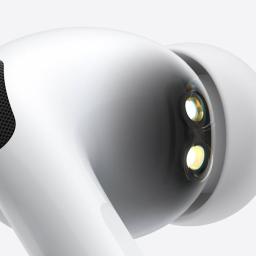 |
on (#70CW7)
Your AirPods may soon become your most important pieces of fitness gear. One of the AirPods Pro 3's new features is heart rate tracking for both workouts and periodic pulse checks. Apple's latest earbuds are equipped with photoplethysmography (PPG) sensors that shine infrared light hundreds of times per second to measure how light is absorbed in blood flow. What's more, the AirPods Pro 3 work in tandem with the iPhone's accelerometers, gyroscope, GPS and on-device AI for more comprehensive cardio insights and to estimate calories burned during exercise. Here's how to use heart-rate monitoring with the AirPods Pro 3, along with some maintenance tips to keep the tech in prime working condition.How the AirPods Pro 3 measure your heart rateAn important aspect of getting accurate data from your AirPods is understanding how the earbuds track your heart rate. If you're using Apple's Fitness app, the AirPods Pro 3 will continuously monitor your pulse during a workout. In addition to the heart rate sensor and accelerometer in the earbuds, details like location, barometric pressure and health information are also pulled from your iPhone, and they're all used to estimate the calories you burn each session. Lastly, if you're wearing both an Apple Watch and the AirPods Pro 3 during a workout, the device with the most accurate data over the last five minutes will be used to track your heart rate.If you prefer to keep one ear completely unobstructed for whatever reason, you might be happy to know you only need to wear one of your AirPods Pro 3 during a workout to track your heart rate. Both earbuds are equipped with heart rate sensors; you can wear either one so you won't have to forego your favorite ear.Required devices for heart rate tracking on the AirPods Pro 3It probably goes without saying, but you need a set of the AirPods Pro 3 to use the heart rate feature. None of the older AirPods models have onboard heart rate sensors. The only other option in Apple's stable that does is the Beats Powerbeats Pro 2.You'll also need an iPhone that's capable of running iOS 26. This is every model from the iPhone 11 and newer, including the second-generation iPhone SE.How to turn the AirPods Pro 3 heart rate sensing on/offTurning heart rate sensing on and off on the AirPods Pro 3 is simple. The feature is enabled by default, but you can turn it off in the AirPods settings menu on your iPhone.
|
 |
on (#70CS6)
Beleaguered video game giant Electronic Arts has agreed to a $55 billion acquisition that will take the company private. Saudi Arabia Public Investment Fund (PIF), Silver Lake and Affinity Partners have reached a deal to buy EA, the company said in a statement.Some details about the proposed arrangement surfaced over the weekend. The deal, the largest-ever leveraged buyout, according to Bloomberg, marks the end of EA's 35-year run as a publicly traded company. Our creative and passionate teams at EA have delivered extraordinary experiences for hundreds of millions of fans, built some of the world's most iconic IP, and created significant value for our business," EA CEO Andrew Wilson said in a statement. "This moment is a powerful recognition of their remarkable work."EA hasn't been immune from the forces that have upended the games industry. Last year, the company laid off more than 650 employees, which it labeled an attempt at "streamlining" its business. This year, the company has canceled an upcoming Black Panther game and closed the studio behind it, and has reportedly "shelved" its Need For Speed Franchise.The company said it expects the deal to close sometime in the first quarter of 2027, noting that it will need regulatory approvals. EA said that Wilson will continue as CEO and that its Redwood City, California headquarters will not change. In a statement Silver Lake Co-CEO Egon Durban said that the group plans to "invest heavily" in the video game company and help it "expand its reach worldwide." Silver Lake is also part of the forthcoming deal to spin off the US version of TikTok into a new, American-owned company.
|
 |
on (#70CPZ)
X is challenging an Indian court order it says would require it to comply with millions of takedown requests without due process. In a statement, the company said it was "deeply concerned" about the ruling, which allows police officers "to issue arbitrary takedown orders through a secretive online portal" called the Sahyog.X's challenge comes after the Karnataka High Court dismissed X's initial challenge of the Sahyog portal last week. As the BBC notes, the Sahyog "describes itself as a tool to automate the process of sending government notices to content intermediaries such as X and Facebook." But X has labeled it a "censorship portal," saying that it allows "millions" of officials, including local police officers, to order content to be removed.
|
 |
by Valentina Palladino on (#6KE4Z)
The vacuum world has gone cordless, untethering us from outlets and saving us fights with pesky wires. Cordless vacuums can be great alternatives to traditional corded models since they're lightweight and easier to maneuver around your home. They've also gotten much more powerful in recent years. Some even come with extra features like app connectivity, self-emptying bases and more. But just like the robot vacuum space, there are dozens of cordless vacuums to choose from now (no, Dyson isn't your only option).
|
 |
by Jackson Chen on (#70CBF)
Snap is imposing a new storage limit on Snapchat's Memories feature, which has racked up impressive numbers since its introduction in 2016. According to Snap, users have saved more than one trillion Memories across its platform, and it's now introducing "Memories Storage Plans" for users who exceed 5GB of Memories.In a press release, Snap detailed that the introductory storage plan allows up to 100GB of storage for Memories for $1.99 a month. Snapchat+ subscribers, who pay $3.99 a month, will get up to 250GB of storage, while Snapchat's highest-tier Platinum subscribers will get 5TB included with their $15.99 monthly cost.Snap said that a "vast majority" of its Snapchat users won't notice any changes since they're far from hitting the 5GB limit. For users who hold onto thousands of Snaps, the company is now rolling out these storage plans. To ease the transition from unlimited storage to paid options, Snap will give anyone exceeding 5GB of Memories a year of temporary storage. These new storage subscriptions follow Snap's latest paid option for its Lens+ subscription, which costs $9 a month.This article originally appeared on Engadget at https://www.engadget.com/social-media/snapchat-introduces-a-paid-storage-option-for-all-the-memories-hoarders-out-there-203013294.html?src=rss
|
 |
on (#70CAC)
Business Insider has obtained the guidelines that Meta contractors are reportedly now using to train its AI chatbots, showing how it's attempting to more effectively address potential child sexual exploitation and prevent kids from engaging in age-inappropriate conversations. The company said in August that it was updating the guardrails for its AIs after Reuters reported that its policies allowed the chatbots to "engage a child in conversations that are romantic or sensual," which Meta said at the time was "erroneous and inconsistent" with its policies and removed that language.The document, which Business Insider has shared an excerpt from, outlines what kinds of content are "acceptable" and "unacceptable" for its AI chatbots. It explicitly bars content that "enables, encourages, or endorses" child sexual abuse, romantic roleplay if the user is a minor or if the AI is asked to roleplay as a minor, advice about potentially romantic or intimate physical contact if the user is a minor, and more. The chatbots can discuss topics such as abuse, but cannot engage in conversations that could enable or encourage it.The company's AI chatbots have been the subject of numerous reports in recent months that have raised concerns about their potential harms to children. The FTC in August launched a formal inquiry into companion AI chatbots not just from Meta, but other companies as well, including Alphabet, Snap, OpenAI and X.AI.
|
 |
by Jackson Chen on (#70C9C)
Martin Shkreli, better known as Pharma Bro for his price-gouging antics with AIDS medication Daraprim, is going to have to defend against claims of misappropriating trade secrets with the unique Wu-Tang Clan album, Once Upon a Time in Shaolin. Earlier this week, US District Court Judge Pamela Chen wrote in a decision that Shkreli has to face a lawsuit that accuses him of improperly saving copies and playing the one-of-a-kind album for followers, which reduced its value and exclusivity.The lawsuit was filed by PleasrDAO - which, according to its own website, is a collective of people involved with cryptocurrency, NFTs and digital art. Once Upon a Time in Shaolin has a strange ownership history, starting with Shkreli purchasing the one-of-one studio album in 2015 for $2 million. After a fraud conviction, Shkreli had to forfeit his assets, including the album, leading to PleasrDAO acquiring it in a government auction for $4 million.On top of the album's highly exclusive nature, it has a condition where it can't be "commercially exploited for 88 years" by any subsequent owners. The collective's argument stems from claims that Shkreli admitted in livestreams that he made copies of the album and played it for his followers, even allegedly posting "LOL i have the mp3s you moron" in response to a member of PleasrDAO posting a photo of the album. If PleasrDAO wins the case, Shkreli will have to give up any copies of the album, as well as provide info on all copies, who they were distributed to and what profits he made from it.This article originally appeared on Engadget at https://www.engadget.com/entertainment/music/martin-shkreli-has-to-face-claims-of-copying-one-of-a-kind-wu-tang-clan-album-174730388.html?src=rss
|
 |
by Jackson Chen on (#70C7V)
The latest Apple silicon is about to hit the assembly lines, according to Bloomberg's Mark Gurman. In the latest Power On newsletter, Gurman said that Apple "is nearing mass production of its next MacBook Pros, MacBook Airs and two new Mac monitors." Gurman added that these upgraded products are scheduled for release sometime between the end of this year and the first quarter of next year.Earlier this year, Gurman noted that Apple was expected to start production on the M5 MacBook Pro during the second half of 2025. All signs seem to point toward Apple following its typical release schedule, where the latest MacBook Pro makes its fall debut, followed by the reveal of the upgraded MacBook Air in the spring. However, Gurman previously mentioned in a July edition of his newsletter that "Apple is now internally targeting a launch early next year" for the MacBook Pro instead.Beyond the upcoming MacBooks, we're expecting one of the two Mac monitors to be the upgraded Studio Display. First released in March 2022, Apple's Studio Display could use a refresh, which some rumors say will include a mini-LED display, along with overall improvements to brightness and color quality.This article originally appeared on Engadget at https://www.engadget.com/computing/laptops/apple-is-reportedly-nearing-production-for-its-latest-m5-powered-macbooks-154148070.html?src=rss
|
 |
by Jackson Chen on (#70BRG)
Escape from Tarkov players may finally get the chance to escape from the fictional war-torn city in northwest Russia, but it won't be easy. During a live Q&A at Tokyo Game Show, Nikita Buyanov, the game's director, told the audience that there will be four endings that players can achieve, which will be determined by the playthrough's completion and progression. Buyanov added that the "best ending" will be "really hard" and "not everyone will escape from Tarkov.""I think it will be something around two percent of all of the player base," Buyanov said of how many players the team expects to reach the toughest ending. "It will be really challenging, and you can treat it as an achievement of your life to finally escape from Tarkov."After being in beta for more than eight years, Escape from Tarkov is scheduled for a 1.0 release, along with its debut on Steam. Even after the November release, Buyanov said that the team still has a ton of content planned for the game's future over the next five years. Much of the new content is still being kept under wraps, as is whether or not the developer plans to do another wipe before the official release that would reset player progression.Buyanov said during the Q&A that there will be seasonal characters subject to typical wipes, along with a permanent main character that can retain progress indefinitely. Buyanov later posted on X that there will be no wipe and that the team will implement "softcore settings," which allow for some experimentation before release, in comparison to the hardcore wipe that took place in July.Update, September 28 2025, 10:40AM ET: This story has been updated to reflect Buyanov's post on X stating that there will be no wipe for Escape from Tarkov before its release.This article originally appeared on Engadget at https://www.engadget.com/gaming/pc/only-two-percent-of-escape-from-tarkov-players-may-get-to-see-its-best-ending-174416980.html?src=rss
|
 |
by Georgie Peru on (#70C2G)
With iOS 26, Apple has expanded its native call recording feature with transcripts, Live Translation, summaries and tighter integration with Notes. It's a more polished and useful tool than before, especially if you rely on your iPhone for interviews, meetings or important conversations.Call recording itself first arrived with iOS 18.1 in October 2024. The feature has always been region- and language-dependent, and that hasn't changed. If it's available where you live, you can capture calls directly from the Phone app without third-party apps or hardware. If it's not, there are still alternative methods worth knowing about. Here's how it works, plus what to do if the option isn't available in your country.How to check if call recording is availableFirst, confirm that the feature is supported in your region. Apple maintains a feature availability page that lists countries where call recording isn't offered, including the European Union, Saudi Arabia and South Africa. If your country is on that list, you won't see the option in the Phone app.Before recording your phone call, you'll need the consent of the person on the other end of the line. When you start recording, both parties hear an audio notice stating that the call is being recorded.How to record a call on iPhoneRecording a call is straightforward:
|
 |
by Mariella Moon on (#70BN8)
The National Labor Relations Board has withdrawn "many of the claims" it made against Apple in relation to cases brought in 2021 by former employees, according to Bloomberg. In particular, it dismissed an allegation that Apple CEO Tim Cook violated workers' rights when he sent an all-staff email that year, which said "people who leak confidential information do not belong" in the company. Cook also said in the email that Apple was "doing everything in [its] power to identify those who leaked" information from an internal meeting the previous week, wherein management answered workers' questions about pay equity and Texas' anti-abortion law.Apple didn't tolerate disclosures of confidential information, whether it's product IP or the details of a confidential meeting," Cook wrote at the time. The NLRB has now withdrawn some of the claims made in complaints by former employee Ashley Gjovik, including that Apple told employees not to disclose company communications, and that it had suspended Gjovik in retaliation and fired her unlawfully. But, not all of the allegations have been withdrawn. Apple settled a separate case with Gjovik back in April, which she announced as a win for workers, as the settlement required Apple to revise rules around employee agreements and discussions of company information to clarify "that employees can talk about their pay, working conditions, and union organizing without retaliation," and speak to the press, among other things.In addition dropping its claim that Cook's email violated workers' rights, the labor board is also withdrawing its allegation that the firing of activist Janneke Parrish, one of the leaders of the #AppleToo movement, broke the law. It's dismissing its previous allegations that Apple broke the law by imposing confidentiality rules and surveilling workers or making them think they were under surveillance, as well. After an investigation, NLRB previously came to the conclusion that Cook's email and Apple's overall behavior were "interfering with, restraining and coercing employees in the exercise of their rights."Bloomberg says this is just one instance of the NLRB being more friendly to companies under President Trump. We've reached out to the NLRB for more information.Correction, September 27, 2025, 6:42PM ET: This story incorrectly stated that the NLRB had withdrawn claims made against Apple in complaints filed by employees including Cher Scarlett. Scarlett's charges against Apple, which relate to pay equity, suppression of wage discussions and constructive discharge, have not been withdrawn or dismissed.This article has also been updated to include additional information about allegations by former employee Ashley Gjovik that have been withdrawn, and about Apple's previous settlement with Gjovik.This article originally appeared on Engadget at https://www.engadget.com/big-tech/us-labor-board-drops-allegation-that-apples-ceo-violated-employees-rights-143053792.html?src=rss
|
 |
by Cheyenne MacDonald on (#70BSK)
These are some recently released titles we think are worth adding to your reading list. Get lost in Bitter Karella's splatterpunk, cosmic fever dream, Moonflow, and the new zombie apocalypse comic, Everything Dead & Dying. This article originally appeared on Engadget at https://www.engadget.com/entertainment/what-to-read-this-weekend-moonflow-and-everything-dead--dying-191722871.html?src=rss
|
 |
by Jackson Chen on (#70BQ9)
Google first teased some enticing upgrades for its Pixel Buds Pro 2 during the Made by Google event in August. More than a month later, Google is finally rolling out the update that makes its wireless earbuds earn the Pro label.The Pixel Buds Pro 2 now get an Adaptive Audio feature in the Active Noise Control section of the Pixel Buds app. This ANC mode automatically adjusts the volume depending on your surrounding environment, balancing between hearing your music or podcasts and the world around you. If you want to drown out the outside world a little more, the Pixel Buds Pro 2 now also have the Loud Noise Protection feature, which can detect and reduce any sudden loud noises, like a passing ambulance siren or construction work. While these two features are already found in Apple's AirPods Pro 3, they're a welcome addition to the more affordable Pixel Buds Pro 2.For anyone who frequently uses Gemini Live, you'll notice that the AI assistant will be able to hear you better in noisy environments thanks to advanced audio processing that prioritizes your voice and eliminates background noise. For a truly hands-free experience, the update even adds gesture controls that let Pixel Buds Pro 2 users nod their head to answer a call or start dictation for a text reply and shake their head to decline a call or dismiss a text. Google is rolling out its 4.467 update to its users gradually, which takes about 10 minutes to download and another 10 minutes to install.This article originally appeared on Engadget at https://www.engadget.com/audio/headphones/pixel-buds-pro-2-get-adaptive-audio-gesture-controls-and-more-in-latest-update-155116813.html?src=rss
|
 |
by Mariella Moon on (#70BKS)
Electronic Arts is close to reaching a $50 billion deal that will turn it into a privately held company, according to The Wall Street Journal. The video game company filed for an IPO way back in 1990 and has been public ever since, but now a group of investors are in talks with the company to take it private. Those investors reportedly include private equity firm Silver Lake, Saudi Arabia's Public Investment Fund (PIF) and Jared Kushner's Affinity Partners, whose largest source of funding is also Saudi's PIF.It's worth noting that EA's shares are already tied to major financial organizations, even though it's publicly traded, with Saudi's PIF owning almost 10 percent of the company. As Reuters notes, analysts believe Saudi is interested in buying out EA due to its annual release of popular sports titles, including Madden and NHL, which makes for predictable earnings.Saudi has made several major investments in the video gaming industry overall as part of its efforts to prepare for a post-oil economy. In addition to its investment in EA, it also purchased stakes in Take-Two Interactive, Activision Blizzard, Nintendo and the Embracer Group. In March, Pokemon Go maker Niantic sold its gaming division to a Saudi-owned company, as well. Unlike PIF and Kushner's Affinity Partners, Silver Lake doesn't have a huge stake in EA at the moment and doesn't have notable gaming investments other than its stake in Unity.Bloomberg and The Financial Times report that the company could announce the buyout as soon as next week, but details could change since nothing has been finalized yet. If the $50 billion deal does push through, it'll become the biggest leveraged buyout of all time.This article originally appeared on Engadget at https://www.engadget.com/gaming/ea-reportedly-plans-to-go-private-with-help-from-silver-lake-and-saudi-arabia-123011751.html?src=rss
|
 |
by Rob Webb on (#70BKT)
Setting your PlayStation 5 as your primary console ensures other users on that system can access your digital games and PlayStation Plus benefits. This includes offline access to your library and shared access for other local profiles on the same device.This guide explains how to enable Console Sharing and Offline Play on your PS5, along with tips to manage your account and avoid common issues. After all, sharing is caring, and this can be a great way for your squad at home to experience a stack of games at no extra cost, while claiming all the trophies (and the glory) for their own profiles.What Console Sharing and Offline Play doConsole Sharing and Offline Play is the PS5 equivalent of designating a primary" console. When enabled on your PlayStation 5, it provides the following perks:
|